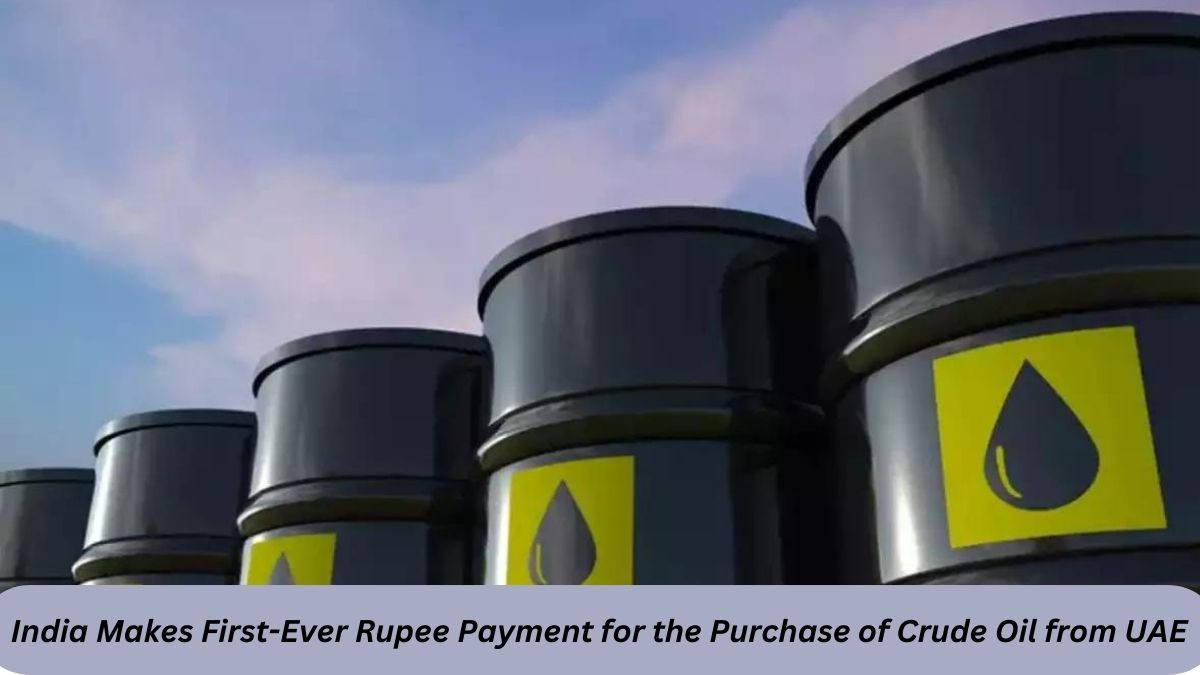India, the world’s third-largest energy consumer, recently made a significant move by conducting its first-ever payment in rupees for crude oil purchased from the United Arab Emirates (UAE). This move is seen as part of a broader strategy to diversify oil suppliers, reduce transaction costs, and position the Indian rupee as a viable trade settlement currency. The Reserve Bank of India’s decision in July 2022, allowing importers to pay in rupees and exporters to receive payments in the local currency, has set the stage for this initiative.
Diversifying Oil Suppliers
India, heavily dependent on imports for over 85% of its oil needs, has adopted a multifaceted strategy to ensure energy security. By diversifying its oil suppliers, the country aims to source from the most cost-effective partners while adhering to international obligations. The recent agreement with the UAE for rupee settlements is a step towards achieving this goal. The Indian Oil Corporation (IOC) made payments in rupees for one million barrels of crude oil from Abu Dhabi National Oil Company (Adnoc), marking a historic milestone.
Russian Oil Imports and Cost Savings
In addition to the UAE, India has also settled payments in rupees for some of its Russian oil imports. This strategic move has proven advantageous, leading to substantial cost savings during the ramp-up of Russian oil imports. By avoiding the need for currency conversions and streamlining transactions in rupees, India aims to make its oil trade more efficient and cost-effective.
The Role of the Reserve Bank of India
The Reserve Bank of India’s decision on July 11, 2022, allowing importers to pay in rupees and exporters to receive payments in the local currency, serves as a foundational pillar for India’s new strategy. This regulatory support provides a framework for smooth and compliant transactions, fostering confidence among international partners.
Challenges and Hurdles
While India has made strides in non-oil trade settlements with certain countries, the adoption of the rupee as a settlement currency faces resistance from major oil exporters. Concerns about fund repatriation and high transactional costs have led to hesitancy among oil suppliers to embrace the Indian rupee. The oil ministry has addressed these concerns, emphasizing that payments in rupees are contingent on suppliers adhering to regulatory guidelines. However, there is limited international interest in using the Indian rupee for oil transactions.
Financial Statistic
In the financial year 2022-23 (April 2022 to March 2023), India spent a substantial $157.5 billion on importing 232.7 million tonnes of crude oil. Key suppliers included Iraq, Saudi Arabia, Russia, and the UAE, with West Asia contributing 58% of all supplies. Despite efforts to enhance domestic supply, it still meets less than 15% of the overall demand.
Important Questions Related to Exams
Q1. What was the recent significant move made by India in the energy sector?
Q2. Why is India diversifying its oil suppliers?
Q3. What historic milestone did the Indian Oil Corporation (IOC) achieve recently?
Q4. How has India benefited from settling payments in rupees for Russian oil imports?
Q5. Which countries were key suppliers of crude oil to India during the specified fiscal year?
Check your knowledge and answer the given questions in the comment section.




 Which Country is Known as the Land of Ch...
Which Country is Known as the Land of Ch...
 Which Bird is known as the King of Birds...
Which Bird is known as the King of Birds...
 India’s Forex Reserves Rise by $1.68 Bil...
India’s Forex Reserves Rise by $1.68 Bil...







